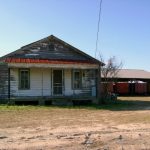|
|
Asset-Based Development: An Approach to Poverty in the U.S.By Tyler MulliganPublished December 29, 2011
A wide array of asset-building tactics have been employed around the country, ranging from individual development accounts for low-income households, to offering banking services to the unbanked, to eliminating food deserts. The sheer number of programs makes it challenging for community leaders to learn about the options and to select the best ones for their communities. What programs have been established? Which asset-building activities would be most suitable for a specific community? Who has undertaken such programs in the past? Some of the answers to these questions can be found in a School of Government web-based guide on asset-building strategies in rural areas. The web guide, titled Building Assets for the Rural Future: A Guide to Promising Asset-Building Programs for Communities and Individuals on the Economic Margin, offers more than eighty examples of asset-based development programs. In the guide, these programs are arranged into the following four broad categories in an easy-to-navigate format: Natural Resources and Features Built Assets and Infrastructure Human, Social, and Cultural Assets (click a link to go directly to the web guide to see programs in that category) Over the coming year, the programs described in the web guide will be highlighted in this blog. Let us know which asset-building programs you have tried and how they worked. |
Published December 29, 2011 By Tyler Mulligan
 With politicians and the media focusing so much attention on the gap between the rich and the poor, some community leaders are asking what they can do to assist communities and households on the economic margin. One approach that deserves serious examination is known as “asset-based development.” This approach involves taking an inventory of existing individual and community assets—such as a viable community bank, determined entrepreneurs, an economic development opportunity, or leaders capable of cooperating on development efforts—and using them to enhance the community’s assets or to create new assets.
With politicians and the media focusing so much attention on the gap between the rich and the poor, some community leaders are asking what they can do to assist communities and households on the economic margin. One approach that deserves serious examination is known as “asset-based development.” This approach involves taking an inventory of existing individual and community assets—such as a viable community bank, determined entrepreneurs, an economic development opportunity, or leaders capable of cooperating on development efforts—and using them to enhance the community’s assets or to create new assets.
A wide array of asset-building tactics have been employed around the country, ranging from individual development accounts for low-income households, to offering banking services to the unbanked, to eliminating food deserts. The sheer number of programs makes it challenging for community leaders to learn about the options and to select the best ones for their communities. What programs have been established? Which asset-building activities would be most suitable for a specific community? Who has undertaken such programs in the past? Some of the answers to these questions can be found in a School of Government web-based guide on asset-building strategies in rural areas.
The web guide, titled Building Assets for the Rural Future: A Guide to Promising Asset-Building Programs for Communities and Individuals on the Economic Margin, offers more than eighty examples of asset-based development programs. In the guide, these programs are arranged into the following four broad categories in an easy-to-navigate format:
Natural Resources and Features
Built Assets and Infrastructure
Human, Social, and Cultural Assets
(click a link to go directly to the web guide to see programs in that category)
Over the coming year, the programs described in the web guide will be highlighted in this blog. Let us know which asset-building programs you have tried and how they worked.
Author(s)
Tagged Under
This blog post is published and posted online by the School of Government to address issues of interest to government officials. This blog post is for educational and informational Copyright ©️ 2009 to present School of Government at the University of North Carolina. All rights reserved. use and may be used for those purposes without permission by providing acknowledgment of its source. Use of this blog post for commercial purposes is prohibited. To browse a complete catalog of School of Government publications, please visit the School’s website at www.sog.unc.edu or contact the Bookstore, School of Government, CB# 3330 Knapp-Sanders Building, UNC Chapel Hill, Chapel Hill, NC 27599-3330; e-mail sales@sog.unc.edu; telephone 919.966.4119; or fax 919.962.2707.

